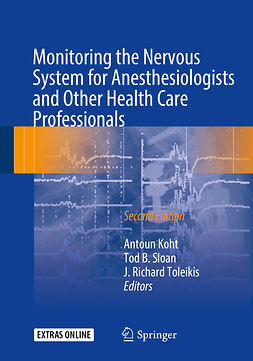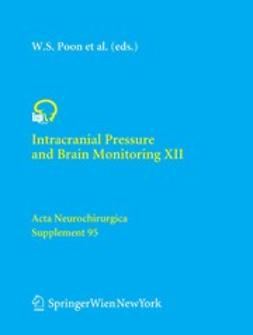Møller, Aage R.
Intraoperative Neurophysiological Monitoring
1. Introduction
Section 1.Principles of Intraoperative Neurophysiological Monitoring
2. Basis of Intraoperative Neurophysiological Monitoring
3. Generation of Electrical Activity in the Nervous System and Muscles
4. Practical Aspects of Recording Evoked Activity From Nerves, Fiber Tracts, and Nuclei
Section II.Sensory Systems
5. Anatomy and Physiology of Sensory Systems
6. Monitoring Auditory Evoked Potentials
7. Monitoring of Somatosensory Evoked Potentials
8. Monitoring of Visual Evoked Potentials
Section III.Motor Systems
9. Anatomy and Physiology of Motor Systems
10. Practical Aspects of Monitoring Spinal Motor Systems
11. Practical Aspects of Monitoring Cranial Motor Nerves
Section IV.Peripheral Nerves
12. Anatomy and Physiology of Peripheral Nerves
13. Practical Aspects of Monitoring Peripheral Nerves
Section V.Intraoperative Recordings That Can Guide the Surgeon in the Operation
14. Identification of Specific Neural Tissue
15. Intraoperative Diagnosis and Guide in Operations
Section VI.Practical Aspects of Electrophysiological Recording in the Operating Room
16. Anesthesia and Its Constraints in Monitoring Motor and Sensory Systems
17. General Considerations About Intraoperative Neurophysiological Monitoring
18. Equipment, Recording Techniques, Data Analysis, and Stimulation
19. Evaluating the Benefits of Intraoperative Neurophysiological Monitoring
DRM-restrictions
Printing: not available
Clipboard copying: not available
Keywords: MEDICAL / Public Health MED078000
- Author(s)
- Møller, Aage R.
- Publisher
- Springer
- Publication year
- 2006
- Language
- en
- Edition
- 1
- Category
- Medicine, Health Care, Mode
- Format
- Ebook
- eISBN (PDF)
- 9781597450188











